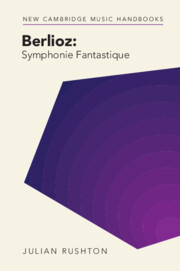Book contents
- Berlioz: Symphonie fantastique
- New Cambridge Music Handbooks
- Berlioz: Symphonie fantastique
- Copyright page
- Dedication
- Contents
- Illustrations and Box
- Tables
- Music Examples
- Preface and Acknowledgements
- Abbreviations
- 1 Introduction, Programme, Outline
- 2 Literary and Musical Romanticism
- 3 Symphonie fantastique in Berlioz’s Lifetime
- 4 First Movement
- 5 Second Movement
- 6 Third Movement
- 7 Fourth Movement
- 8 Fifth Movement
- 9 The Sequel
- 10 Reception
- 11 Other Approaches
- Select Bibliography
- Index
7 - Fourth Movement
‘Marche au supplice’
Published online by Cambridge University Press: 30 November 2023
- Berlioz: Symphonie fantastique
- New Cambridge Music Handbooks
- Berlioz: Symphonie fantastique
- Copyright page
- Dedication
- Contents
- Illustrations and Box
- Tables
- Music Examples
- Preface and Acknowledgements
- Abbreviations
- 1 Introduction, Programme, Outline
- 2 Literary and Musical Romanticism
- 3 Symphonie fantastique in Berlioz’s Lifetime
- 4 First Movement
- 5 Second Movement
- 6 Third Movement
- 7 Fourth Movement
- 8 Fifth Movement
- 9 The Sequel
- 10 Reception
- 11 Other Approaches
- Select Bibliography
- Index
Summary
In his original programme, Berlioz called the last two movements a dream – or nightmare. Despairing of the chances of a production of his opera Les Francs-juges, he took from it a ferocious ‘Marche des gardes’ – soldiers who, in the opera, are obedient to a tyrant. The orchestra is enlarged by additional brass (trombones and ophicleide or tuba) and percussion. The main theme is presented in many guises, with much harmonic and instrumental originality. To fit the March into the symphony Berlioz added a recollection of the idée fixe at the end, where the image of the beloved woman is brutally cut off; interrupted as the protagonist dreams of his own execution by guillotine.
- Type
- Chapter
- Information
- Berlioz: Symphonie Fantastique , pp. 87 - 93Publisher: Cambridge University PressPrint publication year: 2023

